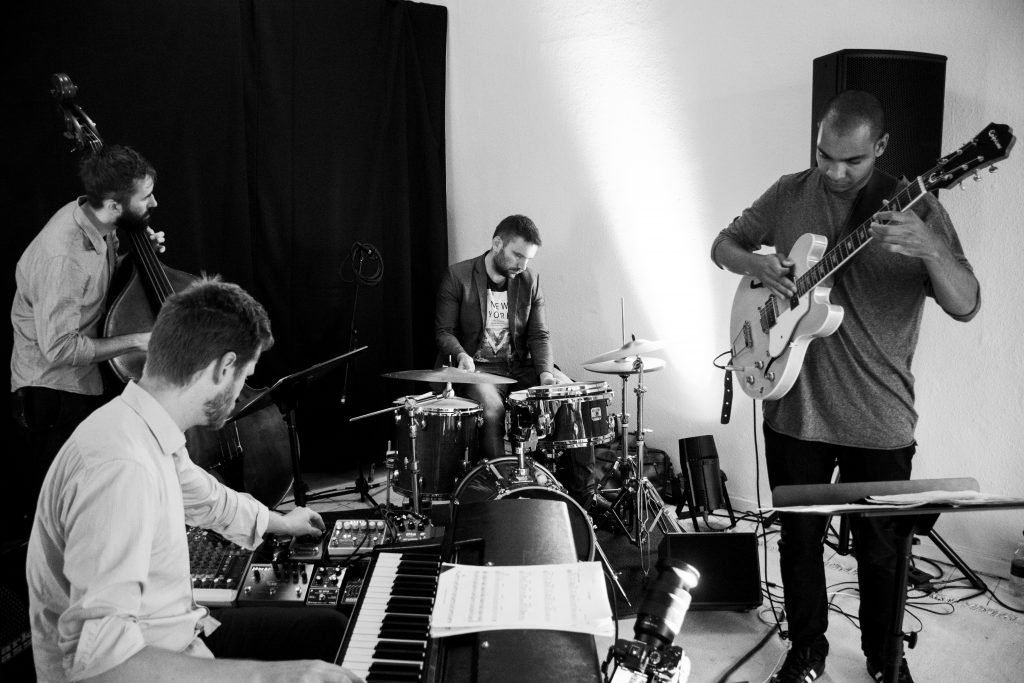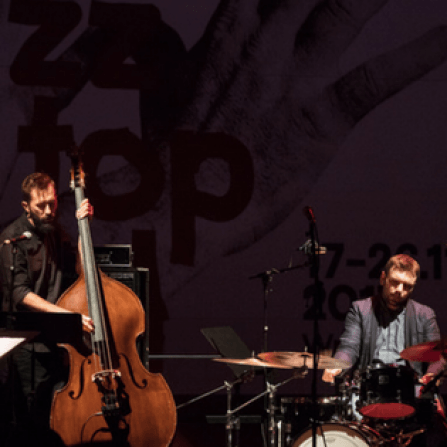The new wave of Polish-Danish jazz cooperation
In 2002 Polish jazz tenor saxophonist, Tomasz Licak began attending a meeting for jazz musicians on the German island of Rugen. Here he met a group of students from Carl Nielsen Academy of Music (now Danish National Academy of Music) who ran a workshop. The approach the young musicians had to music charmed Tomasz and they struck up a friendship. So it was no great surprise when they suggested to him that moving to Denmark to continue his studies might be a good idea. In 2005, he did just that, and began his studies in Odense.
Two other Polish musicians joined Tomasz, saxophone player Bartlomiej Wawryniuk and guitarist Marek Kadziela. And in short, they started the ball rolling for the jazz exchange between Denmark and Poland. However, it wasn’t just by studying here that they inspired countrymen to come to Odense to learn. Tomasz and Marek started a quartet called KRAN with Danish musicians Richard Andersson (bass) and Kasper Tom Christiansen (drums). KRAN went on tour in Poland, playing concerts and leading workshops. While doing this they told about the Danish musical education system.
This got things going. For the entrance exams in 2007, a multitude of Polish applicants showed up. As Tomasz Licak explains, this was the beginning of a chain reaction, bringing fresh Polish musicians to Odense, Esbjerg (Danish National Academy of Music) and Copenhagen (Rhythmic Music Conservatory). Of course, this meant a lot of cooperation between the Poles and their Danish colleagues, going on tours, working with international names, recording, and winning prizes together.
The appeal of Denmark
One thing is how the Polish-Danish jazz collaborations started, and how successful they have been. But why was Denmark such a draw for young Polish musicians in the first place? Looking for a reason why so many Poles wanted to study here, you will undeniably have to talk about the Danish valuation of personal expression over technical prowess. Singer Ania Rybacka tells about her impression of the Rhythmic Music Conservatory:
“There is a huge difference between rytmekons (colloquial term for the school, red.) in Copenhagen and all other conservatories in Europe. It is not just Poland. It is almost as if everything is scrapped, music theory and history, musical notation and nodes. There is an enormous focus on artistic direction, artistic expression, and not so much on what you have learned before. The main thing is do you have something to say as an artist?
The focus on expression and the open approach is the thing that all the musicians we have talked to underline, as what made them fall in love with the Danish system of higher learning in music. The Poles generally had a higher level of technical expertise than their Danish co-students, and that fact made the whole experience into a true exchange.
While the Danes were inspired to work harder on their technical capabilities, the Poles were presented with a level of artistic freedom and openness that was new to them. This openness also extends to the relationship between different generations. When pianist Artur Tuznik came to Denmark, he experienced a student/teacher relationship that he had not known before:
The older generations, let us say above 40 or 50, they are not afraid to listen to the young musicians and be inspired by them, or to make a band with them for the sake of music. Anders Mogensen, the leader of the department for jazz in Odense, really liked to play with us young people. We were a little shocked by that, we thought: “he’s a teacher, he has played all over, he’s older than us, and he wants to record with us? That was great.”
Comparing the Danish and the Polish jazz scene
All the musicians we have interviewed agree that Denmark is a country with a lot of high quality jazz. Especially, they mention Copenhagen Jazz Festival as an event of truly international proportions. Tomasz Licak is clear about how much he appreciates the festival:
Copenhagen Jazz Festival is one of the highlights of the year. I am more excited about it than children are about Christmas presents. Thousands of people from all over the world arrive to hear jazz of the highest international quality, and meanwhile they experience small, unknown things that they will never forget.
It is not all smooth sailing though, if you are a jazz musician in Denmark trying to make a living and entertain a lot of people. Outside CJF and two other big events, Aarhus Jazz Festival and Vinterjazz (Winter jazz), it can be hard to attract audiences – maybe because of the small size of Denmark, maybe because the interest in live events is generally low, compared to other countries. Quite the opposite is true in Poland. As Artur Tuznik explains, besides being about eight times larger than Denmark (population wise) Poland has a strong tradition around live events:
You can play in the big concert halls, and there are many jazz clubs. Besides, it seems like more people go to concerts than in Denmark. Live music has a special place in Poland; concerts are often sold out, also at the larger venues. Some festivals can attract audiences of about 1000-1300 for a jazz concert.
The Danish-Polish Connection
Although the new wave of Polish-Danish jazz exchange started about ten years ago, the connections between the two countries’ jazz scenes go deeper. Back in the 60s, jazz pianist and composer Krzysztof Komeda, internationally known for his soundtrack to Rosemary’s Baby, scored several movies by lauded Danish director Henning Carlsen, among them the highly appraised Sult (Hunger) from 1966.
Through the years, several Polish musicians, including legendary trumpeter Tomasz Stanko, played at the historical club Jazzhouse Montmartre in Copenhagen, often sharing the stage with Danish colleagues. The collaborations also continue among the older jazz generations, presenting listeners with such acts as Tomasz Stanko Quintet, which has Danish Jakob Bro on guitar and Anders Christensen playing the bass. The quintet released the award-winning album Dark Eyes in 2009.
The musicians of the new wave feel they have found a special kind of vibe though. Drummer Radek Wosko express how he feels about the “movement”:
We feel like we have something special, neither 100% Polish nor 100% Danish. We are not 100% part of the Danish scene, and in Poland, we are also looked upon as strangers, with an entirely different set of opportunities. Because of this, it is pretty natural that we try to stick together and stand guard over the values we have created together.
The desire to keep the spirit of the cooperation alive is taking form as concrete initiatives too:
We are working on the establishment of an association with the purpose of strengthening the Danish-Polish cooperation, also because many Danish musicians have toured in Poland, have experienced something special, and have been shaped by it in a certain kind of way.
The initiative of Radek and his kindred spirits is certainly to be applauded. And the Danish Cultural Institute look forward to following the further development of this success story of cultural exchange!
A warm thank you to the four musicians we interviewed: Tomasz Licak, Radek Wosko, Artur Tuznik and Ania Rybacka. They are all achieving high praise for their music, playing/singing in different projects, such as: KRAN, Trouble Hunting, The Beat Freaks, Atlantic Quartet, Artur Tuznik Trio, The Art of Escapism and Sphere.
For experiencing good jazz music in Poland Radek Wosko recommends a visit to Akwarium or 12on14 in Warsaw, as well as the Jazztopad Festival in Wrocław.
Quotes translated from Danish

